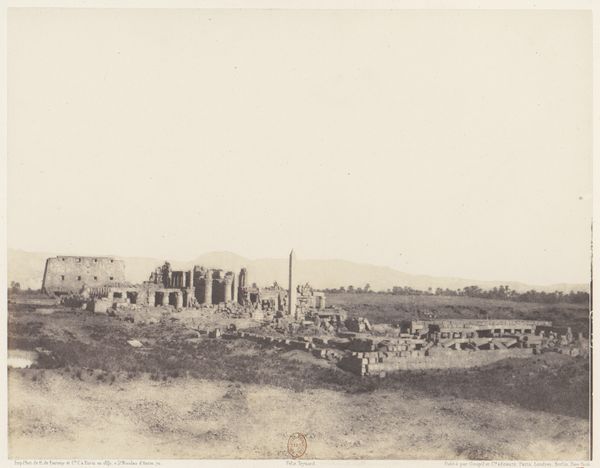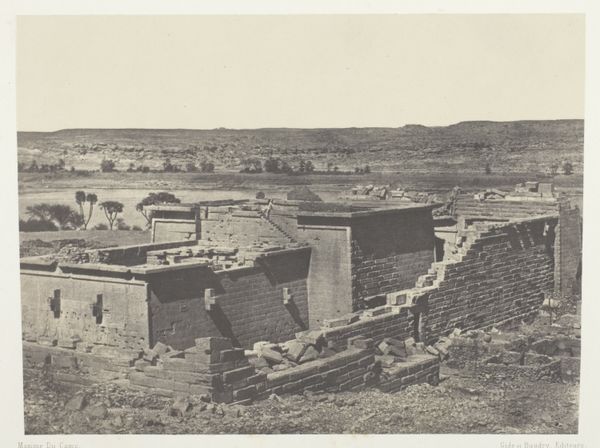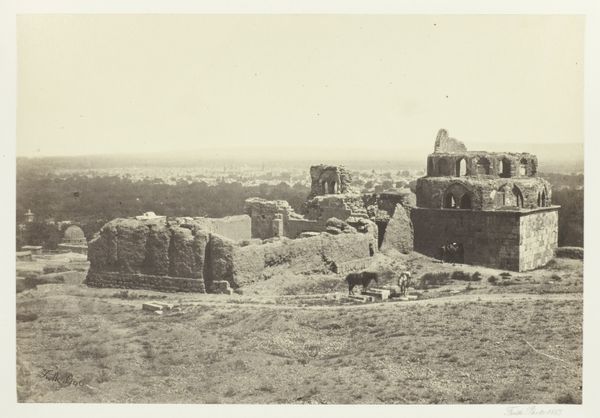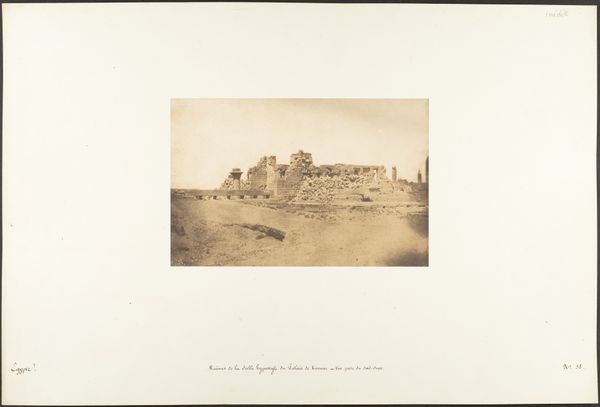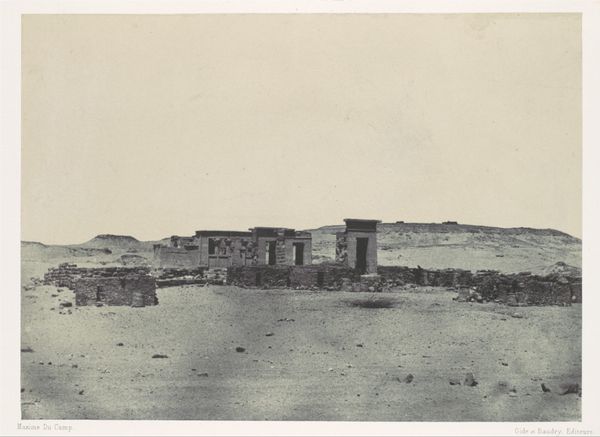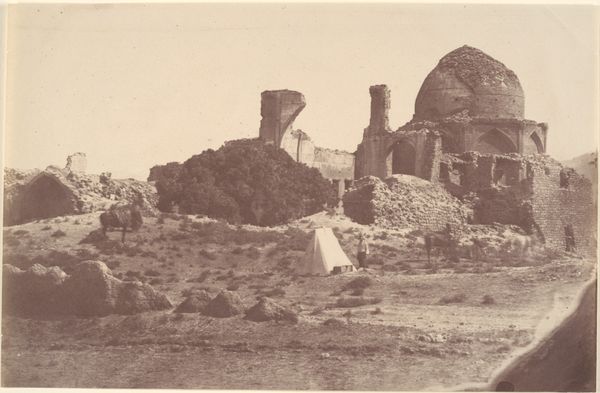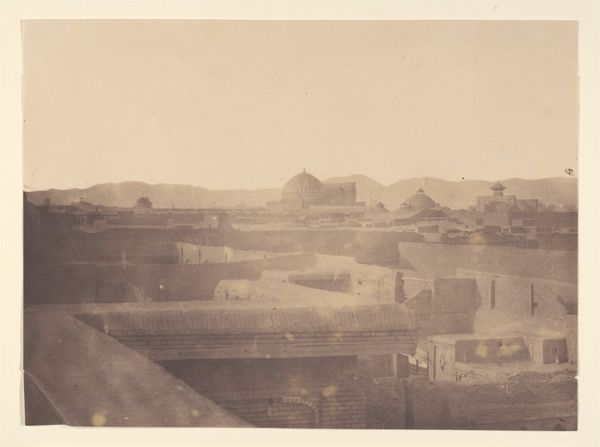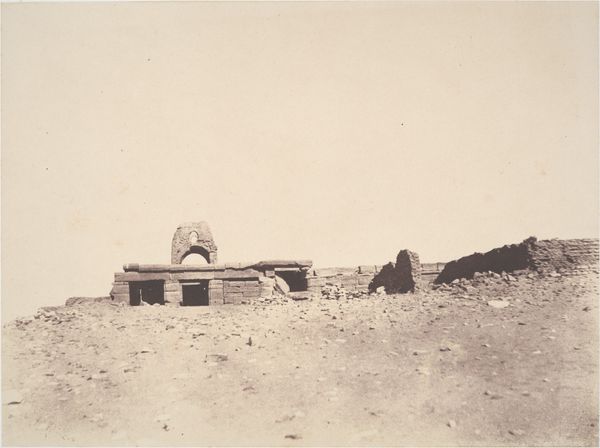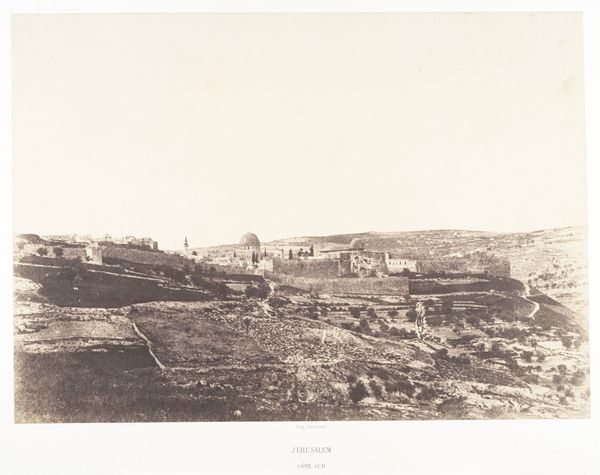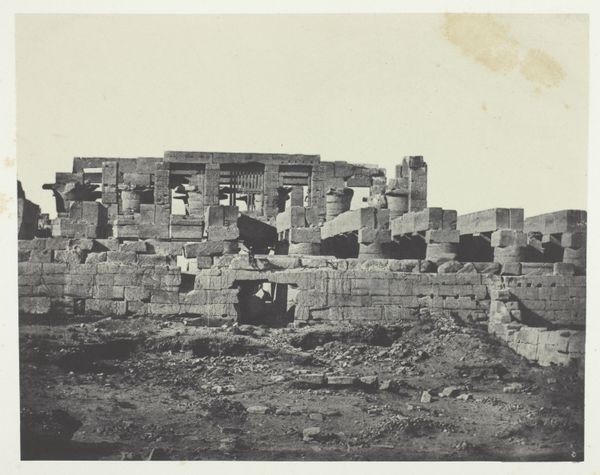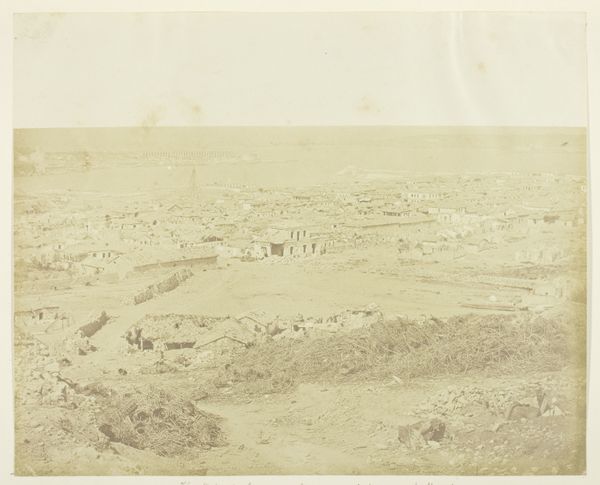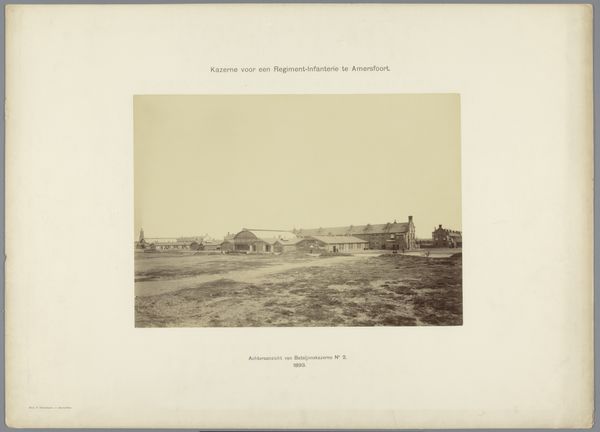
Palais de Karnak, Propylées du Sud; Thèbes Possibly 1849 - 1852
0:00
0:00
print, paper, photography
#
16_19th-century
#
natural tone
# print
#
war
#
landscape
#
ancient-egyptian-art
#
paper
#
photography
#
egypt
#
ancient-mediterranean
#
france
#
monochrome
Dimensions: 14.9 × 20.2 cm (image/paper); 29.8 × 42.8 cm (album page)
Copyright: Public Domain
Curator: Looking at this print by Maxime Du Camp, believed to have been captured between 1849 and 1852, what feelings rise up within you? Editor: Melancholy, definitely. It's like a ghost of grandeur. The scale feels immense, even in this damaged state, but the light is so soft, almost fading. Curator: The artwork, titled "Palais de Karnak, Propylées du Sud; Thèbes", freezes a moment in time using photography, on paper. The remnants of Karnak evoke both wonder and solemn contemplation on the ravages of time and war. What details jump out? Editor: For me, it's the interplay between the sharp, geometric forms of the remaining architecture and the wild, untamed landscape reclaiming the space. The photograph becomes a study in contrasts—order versus chaos, permanence versus decay. There's an evident visual tension created. Curator: The composition draws your eye directly into that tension. The darker foreground gives way to the light reflecting on the crumbled ruins; the details and their careful framing highlight Du Camp's mastery. What cultural and historical undercurrents do you perceive at work within the scene? Editor: Given the time period, I see an Orientalist lens, romanticizing the “exotic” ruins of ancient Egypt. There’s a clear Western gaze upon the fallen empire, an aesthetic fascination with its monumental scale, presented in monochrome tones. It hints at European colonial interests in Egypt, as well. Curator: That intersection is vital, I think. Du Camp's French background definitely shades his interpretations. Consider the semiotic language in how he frames and composes his subjects. It reflects a very specific Western cultural mindset, showcasing what that era considered sublime within those ruins. Editor: Absolutely, and it reminds us that every photograph, even one seemingly objective, carries the weight of the photographer’s worldview. Du Camp's formal choices highlight his perspective as a European visiting these faraway locales. It asks us to examine both what we see and the power dynamics involved in how we’re seeing it. Curator: Thank you; our exchange allows us to reconsider those ruins and ask relevant questions regarding their role as material symbols of French culture during that era, an element that certainly speaks to the present day as well. Editor: Precisely! Thank you. These ruins do inspire critical questioning, a reflective awareness as to our point of view, which always adds meaningful depth when faced with images like this one.
Comments
No comments
Be the first to comment and join the conversation on the ultimate creative platform.
